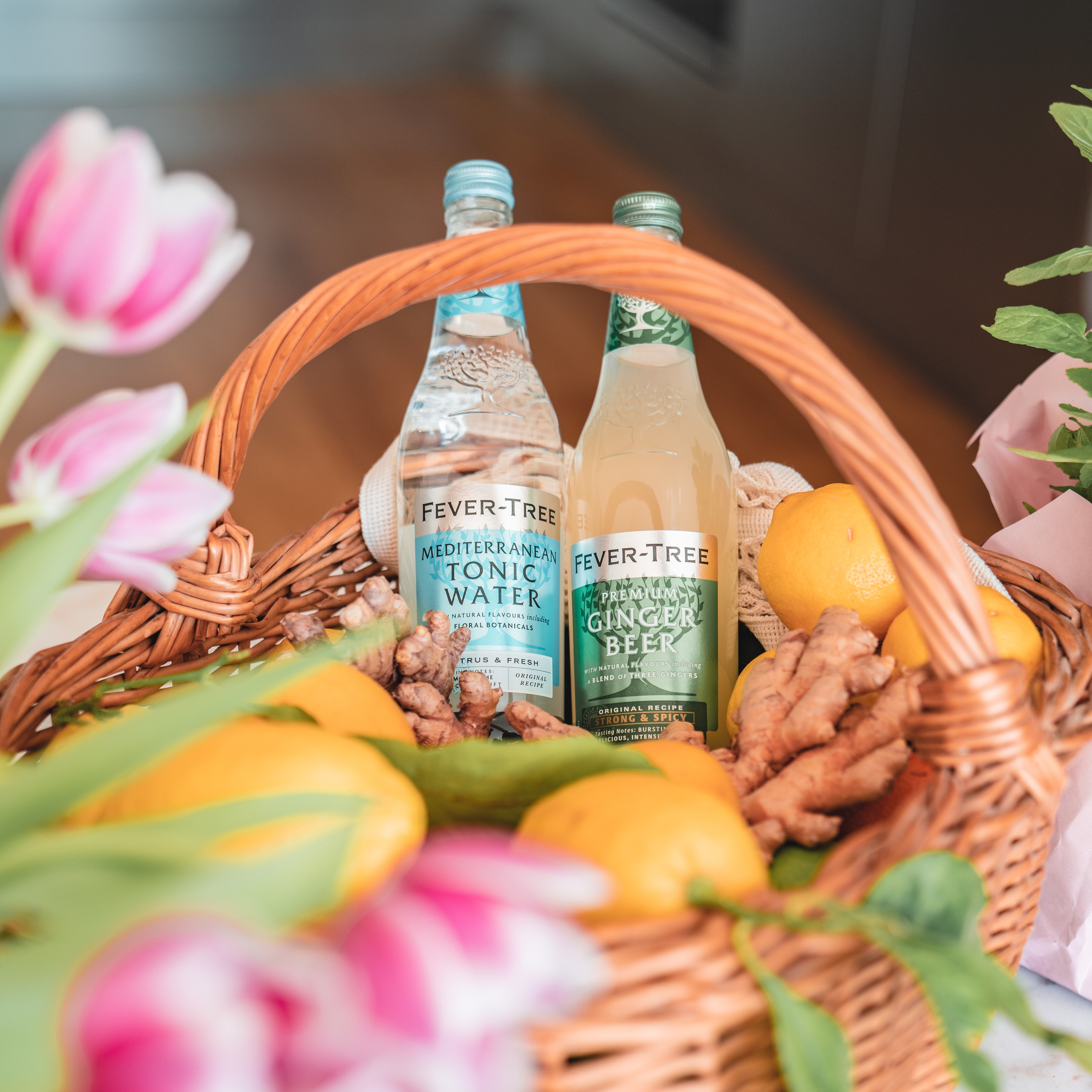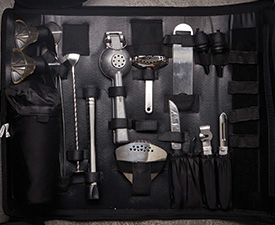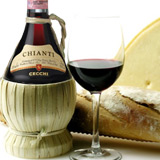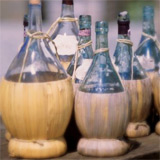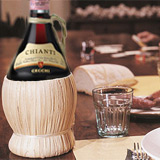A Fiasco - from late Latin flasca, flasco (bottle, container), - is a typical Italian style of bottle, usually with a round body and bottom, partially or completely covered with a close-fitting straw basket, that also enables the bottle to stand upright. This straw covered bottle has nurtured an image of cheap Italian table wine. Though the high cost of hand weaving the straw has lead to the near demise of this charming container.
The basket is typically made of sala, a swamp weed, sun-dried and blanched. The basket provides protection during transportation and handling, and a flat base. Thus the glass bottle can have a round bottom, which is much simpler to make by glass blowing. Fiasco's can be efficiently packed for transport, with the necks of upturned bottles safely tucked into the spaces between the baskets of upright ones.
It is not exactly known when the straw covering was introduced. A 14th century painting by 'Tomaso da Modena' shows a small rounded flask, completely wrapped with cords of some kind, plus other artistic depictions by; Botticelli and Ghirlandaio. The earliest fragments of sala-covered bottles date from the 15th century.
Throughout its history, the Fiasco was found on the tables of peasants and Popes alike. A decree from 1574 and many more after this time - were set in place to try and give a guarantee to the wines authenticity, and another in 1621 mandated sealing the bottle's mouth with molten lead. For this reason, the straw cover had to be reduced, leaving the bottle bare from the shoulder up - which continues to this day.
By the early 20th century, the manufacture of Fiascos employed about 1000 glass blowers and 30,000 basket weavers.
The straw bands can be vertical or horizontal; the former was traditionally used for fiascos destined to local markets, while the latter, with a reinforced base and more careful weaving, was chiefly used for export. The latter often used a basket of whitened straw, decorated with two stripes of the Italian flag colours.







